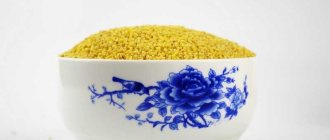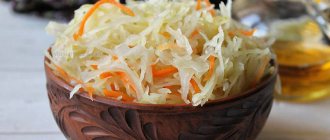Where and how do olives grow?
The largest plantations of olive groves are located in Mediterranean countries. The industry for the production of canned fruits and olive oil is developed in Spain, Italy, Greece, the south of France, Turkey and Israel. Olive plantations are found in South America (Mexico, Peru) and Asia (India, Iraq). During the Soviet Union, the crop was grown in the Crimea, Georgia and Abkhazia.
Olives are black and olives are green
Olives and olives are the fruit of the same tree. It is called European Olive. The ripe crop becomes almost black in color. If you take a good look at the fruit, it will turn out to be dark brown or deep purple in color. The pit in the olive is not removed, because during processing the pulp of a ripe olive loses its ability to retain its shape. Unripe fruits have a pleasant green tint.
Olive varieties: composition and calorie content
The calorie content of green olives is 140 kcal, and black olives - 114 kcal. The former are leaders in the content of proteins, fats and fiber, but contain fewer carbohydrates.
Both varieties are rich in vitamins A, C, E, K, PP and group B (B1, B2, B4, B5, B6 and B9). They have a fairly high content of lutein, beta-carotene and zeaxanthin.
The minerals in the fruit include potassium, copper, sodium, iron, magnesium, zinc, manganese, phosphorus, selenium and calcium. Olives provide the greatest benefit due to their high fatty acid content. Among them are omega-6 and omega-3, stearic, oleic, linoleic and palmitic.
The exact composition of the product depends on the type of tree, climatic conditions of cultivation and processing method. Fruits that have been salted, pickled or preserved are less healthy than fresh ones.
Spanish olives
The most common variety in Spain is Picual. It is versatile, but is most often used to obtain oil. Trees of this variety are grown both in the mountains and on the plains. The taste and properties of the fruit differ depending on the growing conditions.
The Ojiblanca and Casareña varieties produce small-sized olives, the pits of which can be easily separated. These are the best varieties for preservation.
Italian olives
The most popular variety is Vittoria. The variety is characterized by large green fruits with aromatic and juicy pulp. No spices are used when preparing these olives.
Miccio Le Olive is grown in Sicily. The fruits have a bright green hue and a fruity taste. Olives are prepared in brine, the composition of which is kept secret.
French olives
The olive groves near Nice produce small, dark purple fruits with an oily pulp and a piquant flavor. Olives grown in Provence are slightly bitter.
The Nion variety is distinguished by its small fruit size with a heterogeneous dark burgundy color and a slight bitterness. Picolini olives produce green, crisp fruits with a salty aftertaste.
Israeli olives
In Israel, varieties are grown that are intended for making oil. The most common are Barnea and Suri.
Greek olives
Various varieties are cultivated in Greece. They are often named after the area in which they grow. The best Greek olives are Kalamata. They are black in color and have a tart taste. No less popular are the olives of Halkidiki, which produce large green fruits.
Olives: benefits and harm for the body of women and men
The unusual taste of olive berries and their health benefits were appreciated in ancient times, but now the berries are mainly used for culinary purposes, having forgotten about their amazing positive qualities.
Next, we will consider the harm and benefits of olives for the body, we will describe the difference between olives and black olives, as well as how many berries are recommended to be eaten during the day so as not to cause negative consequences on the body.
Nutritional value and composition of olives
Fresh olives are not eaten as a result of their bitter taste, which appears due to the presence of the polyphenol oleoropein in the fruit. To remove this taste, the berries are immersed in salt water for several months, they become sweet and soft, then they are washed and canned, so they end up on the table in canned form.
These berries are very nutritious and perfectly digestible due to their fibrous structure; their structure is rich in the following substances:
- Fats and oils – 56%
- Water – 23%;
- Fiber – 9%;
- Proteins – 6%;
- Vitamins (E, PP, A, group B);
- Macro- and microelements (sodium, copper, zinc and others).
The pulp of the berries contains about 90% of polyunsaturated fatty acids, which are not produced independently in the human body and almost do not accumulate, and for the normal functioning of the body it is extremely important to add foods saturated with such fats to the diet, so the benefits of canned olives are significant.
Calorie content of olives and black olives
Olives and black olives, despite the fact that they are berries from the same tree, have different caloric content. The energy value of canned olives ranges from 180 kcal, and stuffed olives have an even higher calorie content (up to 220 kcal), which depends on additional components, while in olives it is 115 kcal.
These fruits, along with olive oil, can be included in vegetable diets, but pay attention to the content of enough salt in canned berries, excessive consumption of which can cause water retention in the body, which will lead to swelling.
How are olives beneficial for the body of women and men?
Berries are rich in vitamins and mineral compounds; they are healing for various organs and systems of the human body:
- Eating olives increases the secretion of digestive enzymes; they have a gentle effect on the digestive tract, promoting the healing of microcracks in the intestines;
- These berries increase the likelihood of conception, normalize female hormonal levels, create favorable conditions for the birth of a new life due to the presence of monounsaturated fatty acids and vitamins A, E in their composition, this is why olives are useful for women;
- The fruits contain omega-9, which is necessary for the normal functioning of the heart and blood vessels and ensures the restoration of damaged vascular walls, and the presence of oleic acid in the structure of olives does not allow blood cells to stick together and form clots;
- Including berries in the diet, which have a choleretic effect, helps restore the liver;
- Recent studies have revealed a unique substance in olives, oleocanthanol, which has a destructive effect on cancer cells within 60 minutes, while not affecting healthy ones;
- The fruits of the tree are useful for arthritis, osteochondrosis and arthrosis, they strengthen bone tissue and joints, and are an excellent preventive measure for diseases of the musculoskeletal system;
- A positive effect of berries on the male body has also been noted, this is manifested in improving the quality of seminal fluid, thanks to them, better blood flow to the genitals is ensured;
- Olives have a beneficial effect on the nervous system;
- Due to the content of pectins in the berries, which remove harmful compounds from the body, they are recommended for people living in unfavorable environmental conditions.
- Olive oil contains linoleic acid, which is good for vision.
The beneficial properties of olives are also used in cosmetology, because they contain a huge number of components that have a positive effect on hair, nails and skin.
We also read a review of whether olive oil is beneficial for the human body.
What is the difference between olives and black olives, and which is healthier?
There is no significant difference between the berries, because they grow on the same tree, it’s just that the green fruits are picked unripe, and the black ones - when the berries are fully ripe, while olives are more expensive due to the greater costs and time for their ripening.
Interesting fact: olives are called olives only in Russia; in the rest of the world, green and dark olives are distinguished.
We can say that olives are less healthy than olives, which have more useful components and are used to make olive oil. Green olives contain less oil, their flesh is tougher, while black olives contain the highest concentration of oil, they are softer and juicier.
How many olives can you eat a day?
To appreciate the healing qualities of olives, you need to regularly consume no more than 7 berries per day in any form, or you can use olive oil 3 tablespoons per day instead, but remember that it is quite high in calories (220 kcal).
Harmful properties of olives and contraindications for their consumption
In addition to the beneficial Omega-3, these berries also contain the not very beneficial Omega-6, which in significant quantities has the ability to form sclerotic plaques; also, excessive consumption of berries rich in vitamin A will lead to the toxicity of this vitamin.
Most people buy canned olives, to which salt and acid are added, which makes them a contraindication for the following pathologies:
- Cystitis;
- Cardiac ischemia;
- Hypertension;
- Gastritis with high acidity;
- Exacerbation of liver and kidney diseases.
So, the question of whether olives are healthy can be answered positively with confidence, but it is necessary to take into account their quantity so as not to harm yourself.
Chief editor of the site. Cook, technologist, traveler. The article was prepared by one of our authors and was reviewed by the editors. Read more about our team in the section: about the editors.
Source: https://infoeda.com/olivki-polza-i-vred-dlya-organizma-zhenshhin-i-muzhchin.html
Useful properties of olives
Olives have a beneficial effect on the body. Due to their high content of fatty acids, vitamins and minerals, they are used in the treatment and prevention of a number of diseases:
- Phosphorus and calcium help strengthen bone tissue, which helps improve the patient’s condition with gout, arthritis and arthrosis.
- Vitamins B and C regulate metabolism. Olives are low-calorie foods. They are great for helping you lose excess weight.
- Fatty acids help children's bodies grow. Together with fiber and vitamins B, C and E, they speed up metabolism and lower blood sugar levels.
- Vitamins C and E have a strengthening effect on the immune system, so the product is indicated for colds and viral infections.
- Fiber speeds up digestive processes and eliminates gastrointestinal disorders.
- Black olives contain a large amount of iron. Vitamin C helps its absorption. Regular consumption of this product helps increase hemoglobin in anemia.
- Potassium, vitamins PP and B6 normalize blood pressure, increase the elasticity of blood vessels and cleanse the blood of cholesterol plaques.
- For neurotic disorders, the fruits improve blood supply to brain tissue, have a slight calming effect, and strengthen the central nervous system.
For men
For men, olives are considered a healthy product. Zinc increases the production of the male hormone - testosterone. Vitamin B9 fights patchy baldness and stimulates the growth of new hair. B6 increases blood circulation.
Fatty acids cleanse blood vessels and improve erection.
Vitamin E is responsible for sperm quality. It prevents the destruction of testosterone by insulin.
For women
Most often, women use olives for weight loss, as they are low-calorie foods. Unsaturated fats, vitamins A and E increase a woman's fertility and increase the chances of conceiving a child.
Phosphorus and calcium strengthen nails and improve the condition of teeth. Vitamins A and B reduce the formation of wrinkles, give the skin a healthy glow, and hair – thickness and shine.
Selenium together with vitamin E reduce the risk of cancer.
During pregnancy
Vitamin B6 helps thin the blood, strengthens the walls of blood vessels and prevents thrombosis, which is important during pregnancy. At the same time, the quantity of products consumed should be limited: 5-10 pieces are enough. every 2-3 days.
When breastfeeding
Olives can be included in a woman’s diet 1 month after giving birth. Since the fruits contain a large amount of unsaturated fats, they should be consumed up to 5 pieces. in a day.
The benefits and harms of olives
Olives , growing on the long-lived olive tree of the olive family, have been used as a cultivated plant long before our era.
Many people believe that olives are the same as olives, but this is not entirely true.
Yes, they grow on the same tree, but olives are ripe fruits, while olives are picked before they are fully ripe.
Very little is known about the time and place of origin of this tree, symbolizing wisdom, nobility and maturity, but scientists suggest that the tasty olives spread throughout the world from tropical Africa. An olive tree can survive for approximately 2 thousand years, and the first trees, according to archaeologists, appeared 37 thousand years ago.
Today, this cultural form is grown in the countries of Asia Minor, South and North America, East Asia, the Mediterranean, North-West Africa and Australia, and the benefits and harms of olives, which have been discussed for centuries, have been studied quite well by modern experts. They are a great addition to cooking, adding a special taste to dishes. But what is so special about this product and can it be dangerous to human health?
Benefits of olives
- Rich in healthy components that are effective for various diets. Just 100 grams of olives contain a whopping 2.6 grams of fiber.
Also, these fruits boast an abundance of calcium, magnesium and polyphenols, which are simply necessary for the full functioning of the human body. Oleic acid is one of the main substances in olives, which makes it possible to include olives in an abundance of health-improving diets. One has only to take into account that 25 grams of fruits contain as many as 37 kilocalories, so to be effective, they must be eaten in strictly limited quantities; - Maintains body tone for people who lead an active lifestyle. By consuming only 7 or a little more olives every day, athletes will be able to achieve the desired results much faster, since such an amount of product allows the body to be saturated with all the necessary components and recharge itself with energy for the whole day;
- Ensures the full development of the child’s growing body. Due to the content of linoleic acid in olives in the same amount as in breast milk, they are recommended for consumption by young children, as they have a positive effect on the formation of the nervous system.
It is impossible not to note the benefits of these fruits for older people, since they saturate their bodies with calcium, from which this element is washed out with age, which leads to diseases of the musculoskeletal system; - Increases sexual desire. Olives are a well-known natural aphrodisiac, recommended for older men suffering from impotence, weakened erections and other urological diseases;
- Olive oil is absorbed by the body by 98 percent. Olive oil improves a person’s overall well-being, especially extra virgin olive oil.
Due to the content of palmitic, stearic and oleic acids in the oil, this product can be used to remove harmful cholesterol from the blood, as well as rejuvenate the body.According to numerous studies, scientists have concluded that olives successfully combine healthy fats and antioxidants, thanks to which regular consumption of these fruits helps prevent breast cancer in women, the development of malignant tumors of the intestines and skin;
- Improves the condition of the digestive system. The benefits of olive oil can also be noted in its restorative effect on the gastric mucosa, the ability to stimulate the functioning of the bile ducts and relieve constipation, including chronic ones.
The fruits of the olive tree also improve the functioning of the gastrointestinal tract, remove toxic substances and waste from the body and relieve swelling due to its diuretic and choleretic effect, increase the peristalsis of the intestinal walls; - They have a wound-healing effect when applied externally. To do this, it is recommended to use the same olive oil, with which you can lubricate abrasions, eczema, insect bites, burns and bruises, accelerating their healing;
- Prevents premature aging of the body. The abundance of vitamins that make up olives explains their ability to renew cells and prevent the aging process of the body, maintain the elasticity and natural color of the skin, youth and beauty for many years.
This property of the fruit ensures the presence of vitamins A, C and E, which are antioxidants that neutralize the activity of free radicals that destroy our body, and also regenerate cells, slow down the aging process of internal organs and tissues; - Prevent eye diseases. A sufficient intake of vitamin A into the body through regular consumption of olives not only helps maintain youth, but also prevents the development of diseases of the visual organs;
- Strengthens the skeletal system.As we mentioned earlier, olives contain calcium, which is very good for older people who suffer from its deficiency and, as a result, are susceptible to brittle bones and joint diseases. This microelement is no less important for children whose skeletal system is actively developing.
It is worth noting that these fruits also contain vitamins A, D, E and K, which improve the absorption of calcium by bone tissue and promote the deposition of minerals on it. Olives are very quickly absorbed by the body and help activate vital vitamins and minerals, which prevent the development of such serious diseases as osteoporosis.That is why the fruits of the olive tree play an important role in the prevention of diseases of the musculoskeletal system;
- Reduce the risks of cardiovascular diseases. Olives contain a huge amount of monounsaturated fats, which do not contain cholesterol.
That is why regular consumption of fruits not only does not increase the level of cholesterol in the blood, but also maintains its optimal amount. This product is also rich in linoleic acid, which is very useful for the prevention of cardiovascular diseases and diabetes.During medical experiments, it was noticed that people who consumed 2 tablespoons of natural olive oil daily for a week lowered the level of low-density cholesterol in their blood and increased the level of antioxidants. And antioxidant substances are necessary for our blood, as they destroy free radicals that destroy cells in the human body. Therefore, olives are often recommended for the prevention of atherosclerosis, angina, high blood pressure and other diseases of the heart and blood vessels;
- Protects the body from the development of cancer. Several years ago, the medical journal The Archives of Internal Medicine published statistics that stated that women who added Omega-6 monounsaturated fatty acids to their daily diet were significantly less likely to develop breast cancer. Another recent study by doctors at the University of Oxford has proven that olive oil improves the condition of the gastrointestinal tract and protects it from the development of cancer. This is explained by the fact that the fruit oil chemically interacts with stomach acids, preventing the occurrence and proliferation of cancer cells, and also reduces the level of bile acid and increases the amount of the enzyme diamine oxidase, controlling the presence of cancer cells in the body. In addition, olive oil contains beta-cysterol fat, which strengthens the intercellular communication system, which is responsible for cell division, which helps neutralize the proliferation of cancer cells even before they begin to grow and divide. Beta-cysterol is an excellent substance for the prevention of prostate cancer;
- Due to its low acidity, it improves the absorption of fats and salts by the stomach.
READ The benefits and harms of zucchini
Harm of olives
Undoubtedly, olives are the healthiest fruits, but, like most other products, they have some contraindications for use, which you should know about.
- Contains a large number of calories. Olives are considered dietary fruits, but high in calories. Just 100 grams of the product contains as many as 166 kilocalories. For this reason, experts recommend that people who are overweight not overuse olives and adhere to strict restrictions;
- Dangerous for people who suffer from cholecystitis. Doctors explain this by saying that eating fruits activates the choleretic effect, so they are not recommended for patients with this diagnosis;
- Contains excessive amounts of retinol. Because of this, it is recommended not only for sick people, but also for healthy people not to get carried away with this delicacy, since excess retinol in the body provokes poisoning;
- Canned olives contain a high concentration of table salt.
The benefits and harms of olives lie in their rich composition, which provides them with a wide range of uses. Proper consumption of these fruits guarantees you protection from cancer, good skin and hair condition, normal functioning of the digestive tract and excellent health, but for this you should adhere to the daily intake and contraindications for taking olives.
Nutritional value and chemical composition of olives
- The nutritional value
- Vitamins
- Macronutrients
- Microelements
Calories 115 kcal Proteins 0.84 g Fats 10.68 g Carbohydrates 3.06 g Dietary fiber 3.2 g Water 79.99 g Ash 2.23 g Vitamin A, RE 20 mcg beta Carotene 0.
237 mgbeta Cryptoxanthin 9 mcgLutein + Zeaxanthin 510 mcgVitamin B1, thiamine 0.003 mgVitamin B4, choline 10.3 mgVitamin B5, pantothenic 0.015 mgVitamin B6, pyridoxine 0.009 mgVitamin C, ascorbic acid 0.9 mgVitamin E, alpha tocopherol, TE 1. 65 mgVitamin K, phylloquinone 1.4 μgVitamin RR, NE 0.
037 mg Potassium, K 8 mg Calcium, Ca 88 mg Magnesium, Mg 4 mg Sodium, Na 872 mg Phosphorus, Ph 3 mg
Use of olives
The fruits are widely used in various industries. In cooking, pickled or dried olives are most often used. Finished products differ in quality and price category.
Olives produce oil, which is in great demand. It is nutritious and healthy. They produce both a refined product and a first-pressed one, which allows you to preserve all the beneficial properties of olives.
Olives are widely used in cosmetology. They are included in many skin and hair products: shampoos, masks, balms, creams and cleansing tonics.
Traditional medicine also uses recipes with the addition of olives. They are used to prepare remedies for many diseases.
In home cosmetology
At home, you can prepare a mask for dry skin with the addition of olive oil. It will restore the water balance of the epidermis, remove fine wrinkles and refresh the skin. To prepare it you need to take 5 ml of extra virgin olive oil and 0.5 tsp. freshly squeezed lemon juice. Mix the ingredients and apply a thin layer to the face. After 10 minutes, the mixture can be washed off. After the mask, it is recommended to apply a nourishing cream.
With the addition of olive oil, it makes an excellent body scrub. It deeply exfoliates dead skin particles and has an anti-cellulite effect. To prepare the product, you need to mix finely ground sea salt, olive oil and the juice of one lemon in a 1:1:1 ratio. Before using the scrub, it is recommended to steam your body in a hot bath. The product is rubbed into the skin with light massage movements. Then rinse off with warm water.
To strengthen hair and stimulate its growth, use a mask with oil and mustard. To prepare the product 2 tbsp. l. unrefined olive oil is heated in a water bath to +40°C. Then mixed with 1 tbsp. l. mustard powder and 1 tbsp. l. low-fat mayonnaise. The mask is carefully distributed over the entire surface of the hair, the head is wrapped in plastic wrap and left for 10-15 minutes.
During the procedure, slight tingling or pinching of the skin is possible. This is considered normal - this is how mustard affects the epidermis, stimulating the growth of hair follicles. If severe irritation occurs, it is recommended to wash off the mixture. After the procedure, the mask is washed off with warm water and shampoo.
In folk medicine
Traditional medicine uses olive oil, fresh fruits and leaves for therapeutic purposes.
For a severe dry cough, take 30 ml of extra virgin olive oil, 10 g of natural honey and 1 egg yolk. The components are mixed until smooth using a whisk or mixer. The mixture is consumed twice a day, 0.5 tbsp. l. in a week.
For the treatment and prevention of hypertension and atherosclerosis, 40 g of dry olive leaves are poured into 1 liter of boiling water. Leave for 3 hours. Drink 20 ml three times a day 20 minutes before meals.
To remove an abscess or small ulcerative erosion, 5 fresh fruits are ground to a paste. Add 1 tsp. 9% vinegar. The mixture is applied once a day to the area with the formation.
For swelling, brew 1 tbsp. l. crushed olive leaves in 250 ml of water. The decoction is taken 3 times a day before meals. Treatment is stopped after complete recovery.
How to use olives in cosmetology
Fresh olives are also used in the cosmetology industry.
An extract based on their skin has a good antioxidant effect , so it is added to European-made factory cosmetics.
Many women cannot imagine their lives without olive oil . It is used to make massage mixtures, perfumes, masks, face and hair creams.
Products containing it have powerful nutritional properties and saturate the skin and hair with essential substances.
It is also used in its pure form . Regular use of olive oil will eliminate fine wrinkles, refresh the skin, and make hair shiny and radiant.
Much less often, dry olive leaves are added to the composition of the products, which can be bought at the pharmacy.
Source
More articles from the section “Benefits and harms of products”
Cod caviar - benefits and harm, properties
What are the benefits of fermented baked milk, what is its composition and who is it contraindicated for?
What kind of grain is couscous, benefits and harms, calorie content
Is red meat good or bad for your health?
Product in cooking
The use of olives in cooking is almost unlimited. They are added to pizza, salads, and pasta. The fruits are often used as an ingredient in soups, pesto and focaccio. For piquancy, a small amount of olives is used when preparing meat and fish dishes, stewed or baked.
It is customary to decorate festive table dishes with whole or chopped olives: sandwiches, meat or vegetable slices. The fruits are also served as a snack, dried or pickled.
They are used as decoration and various alcohol shakes. If you eat alcoholic drinks with olives, you can reduce intoxication of the body and hangover syndrome.
Greek salad
To prepare a classic Greek salad you need to take the following ingredients:
- 200 g olives;
- 100 g lettuce leaves;
- 1/2 head of red onion;
- 150 g feta cheese;
- 2 cucumbers;
- 4 tomatoes;
- olive oil, salt, pepper and oregano to taste.
Cheese and vegetables are cut into cubes, onions into half rings. For the dressing, mix oil, salt, pepper and dried oregano. Combine all ingredients. Place on a bed of lettuce leaves.
Cheese pie with olives
The following products should be prepared for the test:
- 400 g flour;
- 100 ml water;
- 300 g butter;
- pepper and salt
For filling:
- 6 eggs;
- 100 g butter;
- 200 ml milk;
- 200 g cottage cheese;
- 300 g hard cheese;
- 300 g olives.
The butter is ground with flour and salt. Then pour in water. Knead a stiff dough, which is rolled out and placed in a mold. The base is pierced in several places with a fork.
Grate the cheese on a coarse grater. Divide it into 2 parts. The first half is poured onto the dough, followed by 150 g of olives. Milk and cottage cheese are mixed with eggs until smooth. Pour the mixture into the mold. Place olives on top again and sprinkle everything with the remaining cheese. Bake for 30 minutes at +180°C.
Olive sauce
For preparation you will need:
- 20 pcs. green fruits;
- 4 tbsp. l. wine vinegar;
- 30 g fresh basil;
- 8 tbsp. l. olive oil;
- a pinch of salt;
- 2 tsp. mustard.
Remove pits from olives. Place all ingredients in a blender bowl and blend until smooth. Use as a salad dressing.
Canned olives
The benefits of canned olives in jars are less than those of fresh fruits. But if preservatives and dyes are not used in production, then vitamins and microelements are preserved as much as possible.
Pickled black seedless fruits are often found on sale. Harmful additives are used in this production. First, the fruits are soaked in acoustic soda for 6-7 days. They are then dyed with ferric gluconate, which gives the finished product a stable black color.
Contraindications
Unlike many other products, olives have virtually no contraindications or harmful properties. True, they have an extremely strong choleretic effect, so they should be included with caution in the diet of people suffering from cholecystitis. This is their main harm.
Also, canned olives contain a lot of salt, so they are harmful to use for colitis and stomach ulcers. Like some other foods, olives in excess can cause harm to our body.
Harm and contraindications of olives
Canned black olives can be harmful if their color is not natural and the fruits are artificially colored in production. The components used can cause an allergic reaction in the consumer. Long-term treatment with these substances greatly reduces the content of nutrients in olives. In addition, the saline solution in which the products are stored can cause a reaction in the kidneys and liver.
You should be careful when consuming canned products while pregnant. Too high a salt content in the brine can cause swelling. If you are prone to it, you should stop using the product in the third trimester.
Since olives are classified as choleretic foods, they are not recommended for use in cases of cholecystitis, pancreatitis and the formation of stones in the gall bladder and its ducts.
Composition of the product
True gourmets often call olives the most piquant addition for their taste. According to them, it is impossible to imagine any Mediterranean dish without berries. But modern doctors and nutritionists are convinced that these fruits are a real gift of nature, the beneficial properties of which are highly valued all over the world.
Olives are an indispensable product on our table, the benefits of which far outweigh the potential harm, which will be discussed below.
In terms of their medicinal properties, they are not inferior to, and sometimes even superior to, many well-known fruits and vegetables. The pulp of black olive fruits includes a whole range of useful substances, in particular:
- vitamins A, B, C, K, E;
- pectins;
- folic acid;
- mineral elements (calcium, copper, iron, phosphorus, zinc, etc.).
But the most valuable thing in their pulp is oil. Its concentration is 50-80%. The uniqueness of olive oil is that it contains unsaturated fatty acids, which reduce the amount of cholesterol in the blood. This benefit of the product has long been appreciated by experts.










